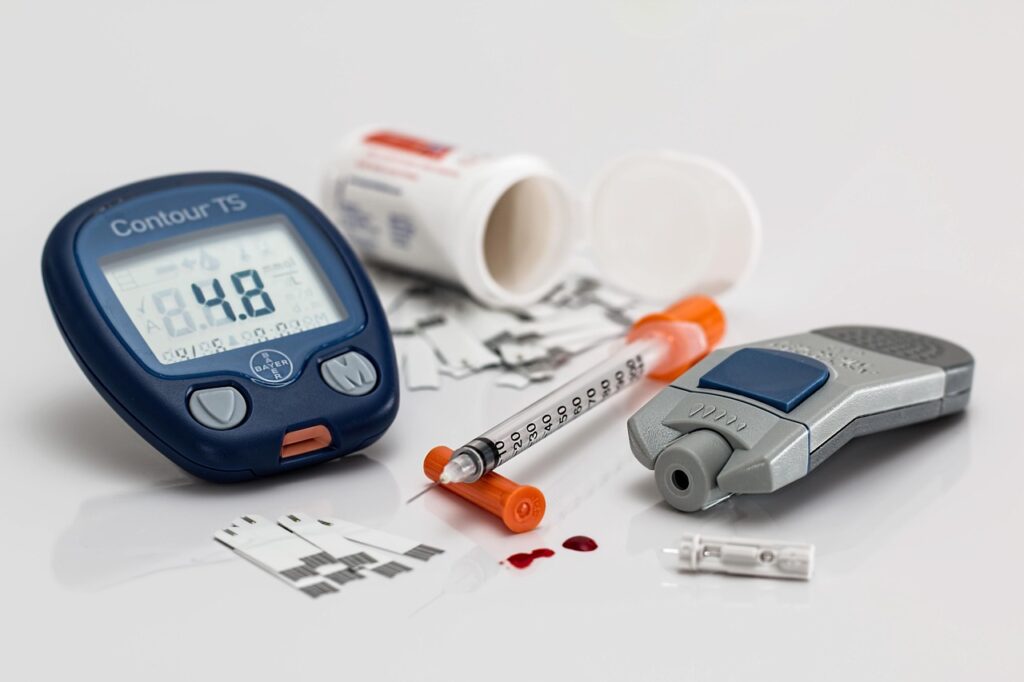This is a case study for diabetes mellitus, discussing the patient, diagnosis, management and outcomes, to learn about the ordeal of living with diabetes.
Diabetes mellitus is a metabolic disorder characterized by high blood sugar (glucose) levels with the body having problems creating proper insulin or using it.
There are actually two main types of diabetes; Type 1 diabetes and Type 2 diabetes but both are affected by the same factors: genetics, environmental factors and lifestyle.
Patient Background
Name: John
Age: 56
Sex: Male
Chief Complaints: Polydipsia, polyuria, weight loss, fatigue
Medical history: Hypertension, high cholesterol and a family history of type 2 diabetes
Lifestyle: Lack of exercise, unhealthy diet, and smoking
56 year old male John came to his physician with complaints of increased thirst, increased urination, weight loss and fatigue without any explanation.
He had been having these symptoms for the last 2 months, but had previously ignored them as stress-related. But his health started to deteriorate and he had to see a doctor.
Assessment and Diagnosis
On evaluation, John’s healthcare provider took a detailed history and physical examination and found multiple red flags.
He had a BMI of 31 classifying him as overweight and a family history of Type 2 diabetes; both of his parents had been diagnosed with the disease.
The doctor ordered these tests to confirm the diagnosis:
Fasting Blood Glucose: 155 mg/dL (Normal: 70-100 mg/dL)
HbA1c (Glycated Hemoglobin): 8.4% (Normal level: 4-5.6%)
Oral Glucose Tolerance Test (OGTT): 2 hours blood sugar: 200 mg/dL (Normal: 140 mg/dL)
These results confirmed that John had Type 2 diabetes mellitus, a condition in which the body either does not produce enough insulin or becomes resistant to the insulin that it does produce.
His high HbA1c levels suggested poor long-term blood sugar control and his fasting blood glucose was also far above the normal range, confirming the diagnosis.
Understanding Type 2 Diabetes
The most common type of diabetes, 80–90% of people with diabetes are type 2. It happens when the body’s cells become resistant to insulin, a hormone that regulates blood sugar.
Over time, the pancreas fails to secrete enough insulin to overcome this resistance, resulting in elevated blood sugar levels.
In contrast to Type 1 diabetes, in which the body ceases to make any insulin at all, Type 2 diabetes is a progressive disease that can usually be controlled with lifestyle changes, oral medications, and sometimes insulin therapy.

Treatment Plan and Management
His healthcare provider collaborated with him to create a detailed treatment plan focused on controlling his diabetes, enhancing his well-being, and averting complications.
Lifestyle Modifications
As had been, he was told to live a better life and exercise. Eating a healthy diet, and losing weight.
This would help him become more insulin sensitive and make his blood sugar levels healthier naturally.
John was advised to participate in at least 150 minutes of moderate aerobic activity each week and modify his diet to incorporate healthier options, like more vegetables, whole grains and lean proteins.
Medication After Case Study For Diabetes Mellitus
To manage his blood sugar levels, John was prescribed metformin, the first line medication for Type 2 diabetes management. Metformin works by reducing the amount of sugar produced
follow-up visits to monitor John’s progress. His blood sugar levels, HbA1c, and other health parameters were monitored during these visits.
Plus, the doctor offered continued support to encourage John to manage stress and stay motivated to change his lifestyle.
Progress and Outcomes
Six months after beginning the treatment plan, John went back to his healthcare provider for a follow-up appointment. At this visit, there were notable gains in his blood sugar levels and overall health:
Fasting Blood Glucose: 110 mg/dL (Was 155 mg/dL)
HbA1c: 7.1% (Down from 8.4%)
Weight Loss: John had lost 15 pounds, leading to a better BMI
Blood Pressure and Cholesterol: Were both normal through medication and lifestyle changes
John where he felt more vigorous, and his fatigue and increased thirst were vastly improved. His doctor was pleased with how he was doing and told him to keep up with his healthy lifestyle habits, but also to keep taking his medications.
Challenges and Considerations
John’s results were encouraging, but controlling Type 2 diabetes is a long-term endeavor that demands dedication and diligence. Below are some of the challenges John encountered:
Sticking to Routine: His job was demanding, making it hard to stick to his healthy diet and workout schedule.
Medication and Dosage: Gradually, John’s doctor adjusted his medication ( dosage) as his blood sugar was regularly checked and it maintained in desired value.
Stress Management: High stress levels can impact blood sugar control.
Conclusion
This case study for diabetes mellitus emphasizes the role of early diagnosis, customized treatment regimen and lifestyle modification for the management of Type 2 diabetes. John’s case illustrates that with adequate care and support, managing blood sugar levels, preventing complications and leading a healthy life is possible.
But managing it well takes constant vigilance, frequent medication adjustments and the willingness to make long-term lifestyle changes.
Although very difficult, diabetic individuals such as John. Effective diabetes management involves maintaining consistent contact with healthcare providers and practicing a healthy diet, physical activity, and medication compliance.

